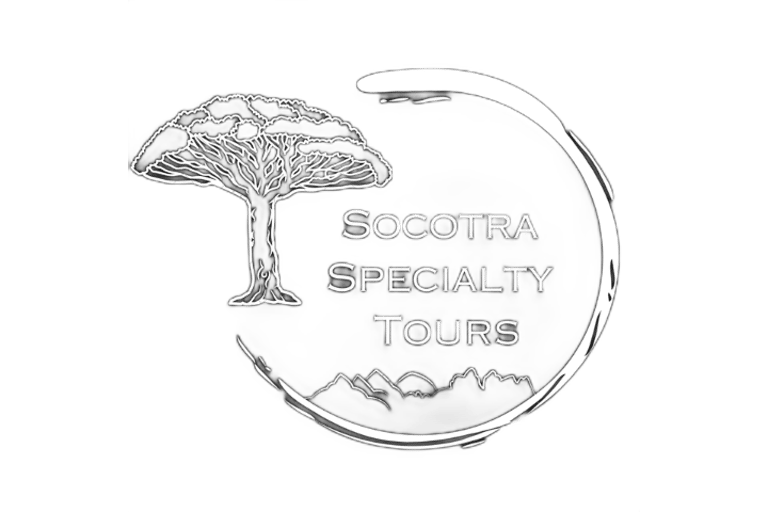
KNOW SOCOTRA
SOCOTRA, YEMEN
The Socotra Archipelago is a hidden gem located in the northwestern part of the Indian Ocean. It's known for its exceptional biodiversity, pristine landscapes and friendly locals. Visiting Socotra is truly an experience of a lifetime!
Join us in exploring Socotra's unique biodiversity and geological wonders. Our tours offer a once-in-a-lifetime opportunity to witness this extraordinary island's natural beauty and scientific significance. Book your adventure today!
A BIT OF HISTORY

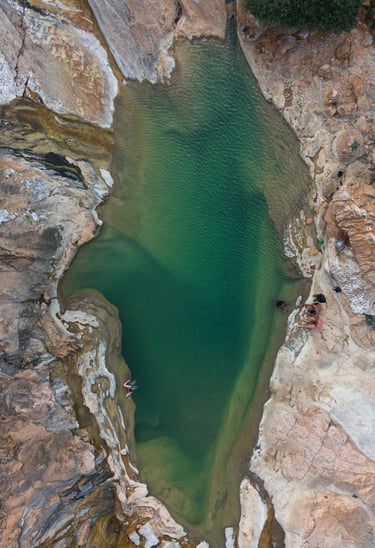
The Socotra Archipelago, situated in the northwest Indian Ocean, comprises of four main islands: Socotra itself (occupying around 95% of the territory), Abd Al Kuri, Samha, and Darsa, along with some smaller sea stacks. These islands are separated by shallow seas and are situated a significant distance from the African mainland, marked by a deep trench.
Socotra's islands are fragments of the ancient supercontinent Gondwana, with a history stretching back millions of years. Positioned at the crossroads of Africa, Arabia, India, and Madagascar, Socotra's current location on the African continental plate emerged 20 to 15 million years ago as Arabia rifted from Africa, forming the Gulf of Aden. This dynamic past has seen fluctuating sea levels, possibly creating land bridges to the Horn of Africa during past glaciations.
Currently part of Yemen, Socotra was formerly connected to Oman's Dhofar Governorate. Both regions share similarities in Precambrian rocks and sedimentary sequences, echoing the island's geological ties with the current area of Salalah.
CULTURE AND LANGUAGE
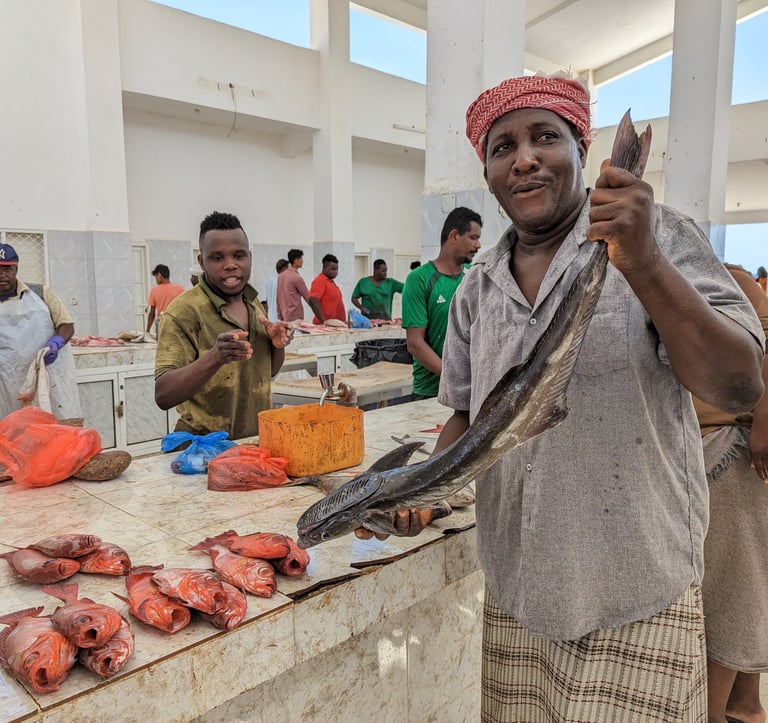

Socotrans have been the careful guardians of the island for millennia, creating complex traditional rules for managing the environment which has protected the biodiversity you still see today. People are heavily reliant on their livestock, fishing and tourism for livelihood.
The locals of the island speak their own Semitic language, Socotri, but Arabic is widely spoken as well. There are fears that since Socotri has no written form that it will become extinct.
GEOLOGICAL BIODIVERSITY
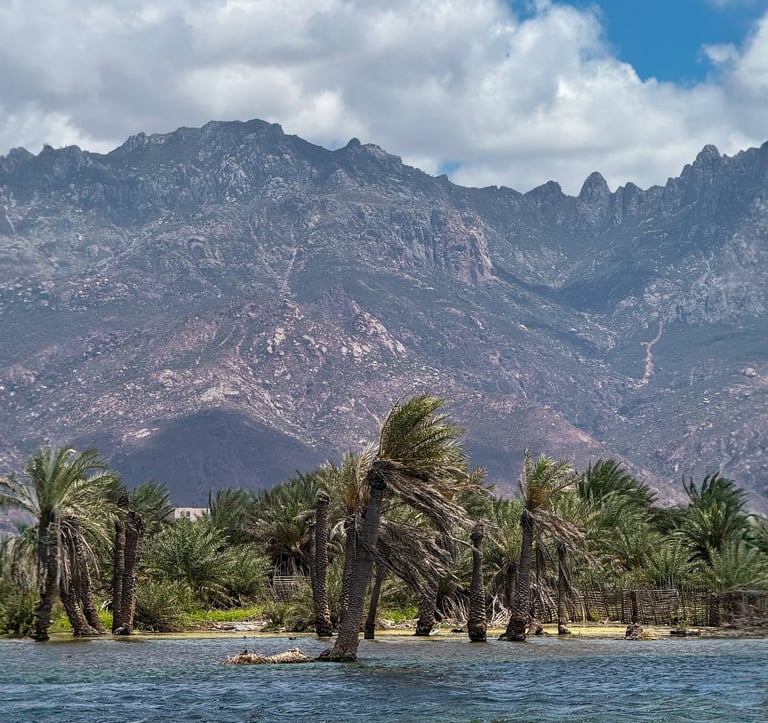

Coastal Plains
Socotra's coastal plains, up to 8km wide in places, are marked by diverse landscapes. Stretching about 80km along the southern coast, plains like Nougad are interrupted by rocky headlands and limestone escarpments. Wadis (oases), though often dry, occasionally host freshwater or brackish lakes during floods. The soils here, alluvial and mixed with fine grey soil, were historically vital for local agriculture, while sandy areas bear witness to the island's geological history.
Limestone Plateau
The limestone plateau covers much of Socotra, reaching heights of 300-800m and dropping dramatically to coastal plains or the sea. Characterized by karst features like bare pavements and shallow holes, this area also boasts flat grasslands where deeper soils accumulate. Streams are sparse, but caves dot the landscape, and weathering has enriched the soil, crucial for the island's ecological balance.
Hajhir Mountains
The Hajhir mountains dominate Socotra's east and central regions, with peaks exceeding 1300m and Jebel Skand soaring over 1550m as the archipelago's highest point. Known for their dramatic pinnacles, moist gullies, and steep slopes, these mountains are a biodiversity hotspot. Decomposed granite here enriches the soil in valleys and gentler slopes, supporting diverse vegetation despite the harsh conditions of the peaks.
CLUES FROM THE CAVES
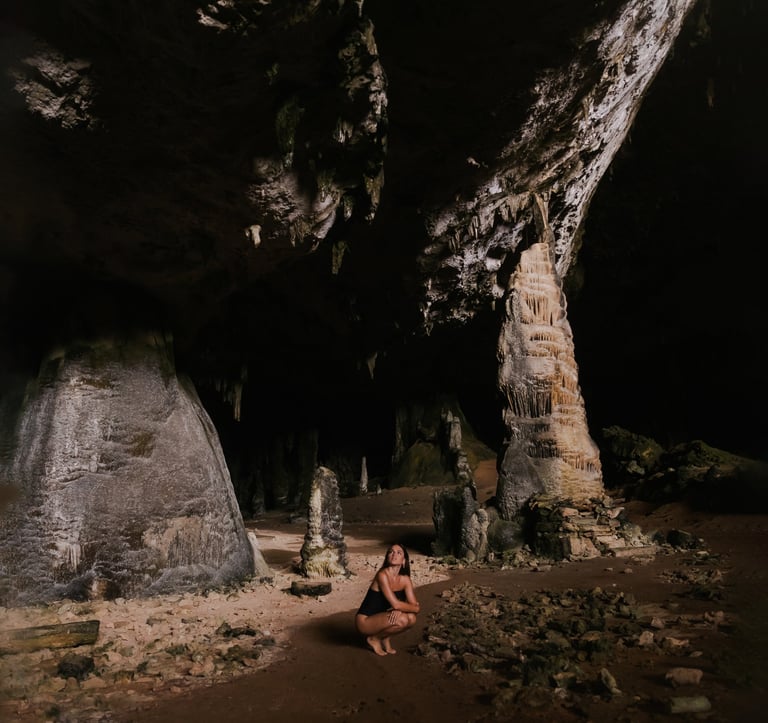

Socotra’s caves with stalagmites hold valuable records of climate change. By measuring the growth rate, carbon isotopes, and oxygen isotopes in stalagmites, researchers can reconstruct temperature and moisture histories over the last 5,000 years. These insights help us understand and keep track of the island's environmental changes.
WEATHER
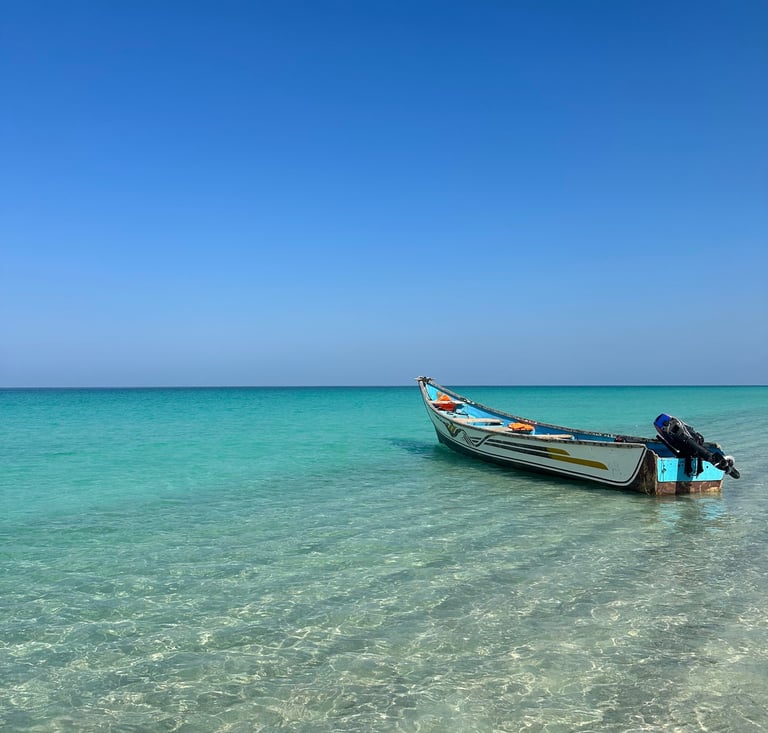

The weather in Socotra is fairly stable much of the year, but does have some seasonal variability. "Tourist season" starts from the end of September, when the monsoon season ends.
September – October (H: 32C L: 21C) usually brings warm and windless days.
November (H: 30C L: 19C) sometimes brings episodic rainfalls and storms.
December – January (H: 28C L: 17C) is when all of the trees of the island get their leaves back. It is the best time for walking and hiking.
February – March (H: 29C L: 18C) are the most beautiful months. The Dragon Blood and Bottle Trees are in bloom and the sea calms down.
April – May (H: 33C L: 22C) get quite hot (30-34ºC). The sea is calm and the water is warm.
June-July-August (H: 34C L: 23C) is the monsoon season. Strong, hot winds blow the dirt and dust through the air and create very rough seas.
FOOD
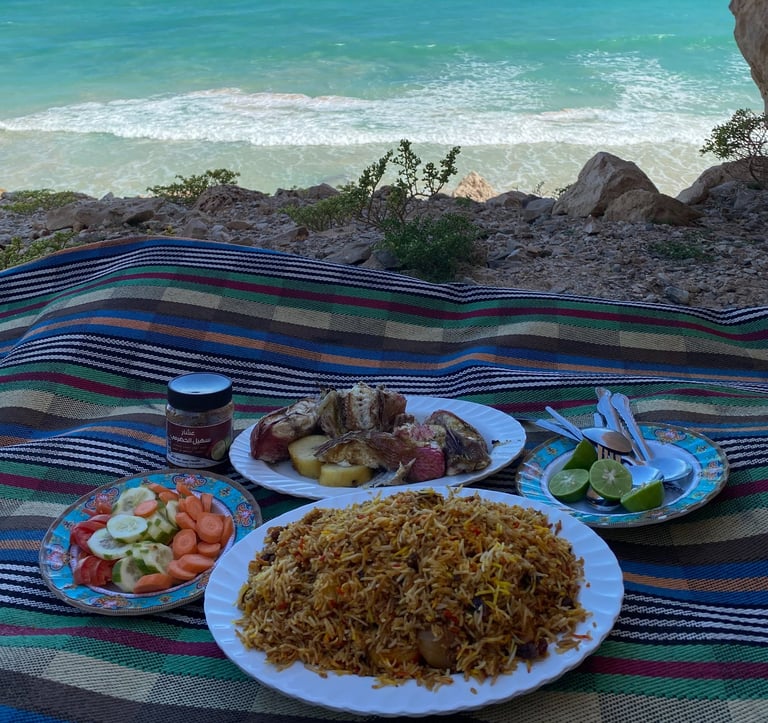

Hungry? Get ready to experience delicious Socotran cuisine! Seeing as Socotra is an island, fish is one of the staples. It’s usually served with rice and flavorful spices. Chicken and goat meat is also eaten with rice, but these aren’t as often as fish.
Also common is fasolia (red beans) and egg omelets eaten with traditional Yemeni bread, potato stew and pasta with tuna.
Want something sweet? Try masoob, a dessert made by smashing over-ripe bananas with bread. The mixture is then topped with cream, honey and dried fruit or nuts.
AMAZING ANIMALS
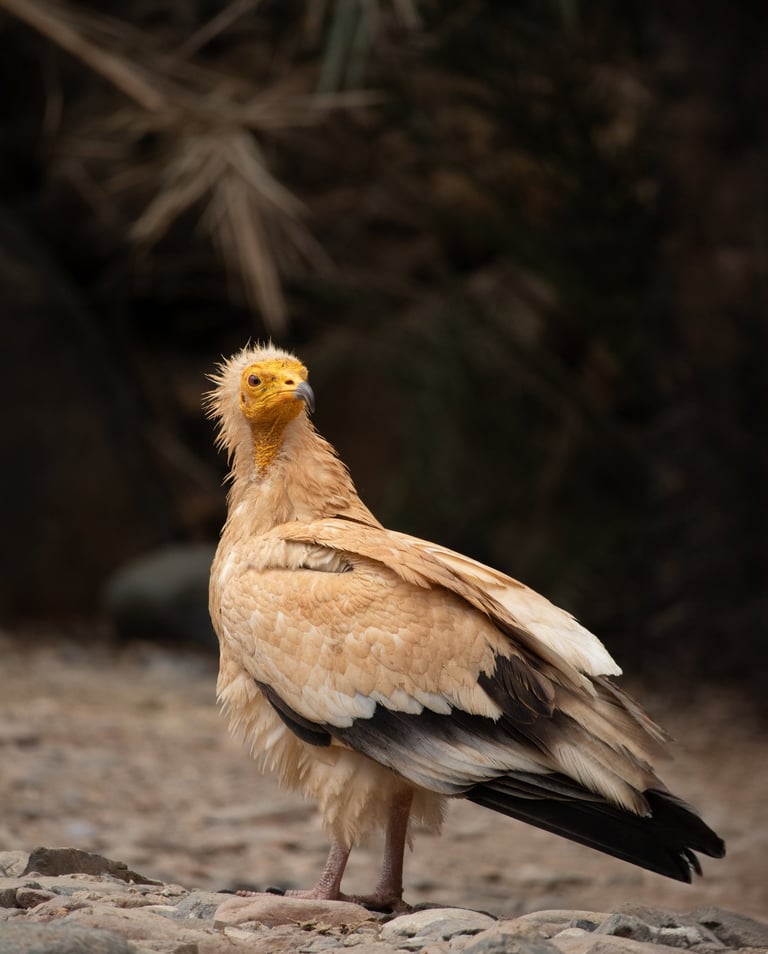

Socotra is a treasure trove of biodiversity, offering an exceptional glimpse into the natural world. The island is home to 225 bird species, including six endemics like the Socotra Sparrow, Socotra Cisticola, and the rare Socotra Bunting. Additionally, the island hosts over 45 species of migrating and breeding birds, such as flamingos, cattle egrets, and reef herons. Socotra boasts the highest density of Egyptian Vultures globally, making it a birdwatcher's paradise.
Socotra's insect life is equally impressive, with 190 butterfly species and 600 insect species, approximately 90% of which are endemic. The island's reptilian population includes 19 endemic species out of a total of 22. Bats are the only native mammals, but you might also spot the elusive civet cats.
Socotra’s marine ecosystem is a blend of species from the Western Indian Ocean, Red Sea, East Africa, and the wider Indo-Pacific. Despite its small size, the archipelago is home to over 730 species of coastal fish, 230 species of hard corals (five of which are endemic), and 30 species of soft corals. The waters around Socotra also host 300 species of crustaceans, 490 species of mollusks, and 230 species of algae.
Sea turtles nest on the northern beaches, and the endemic freshwater crab, Potamon socotrensis, is common in water streams. Dolphins also fill the water surrounding the island. Socotra's rich marine life is a testament to its unique biogeographical position.
CAPTIVATING PLANT LIFE
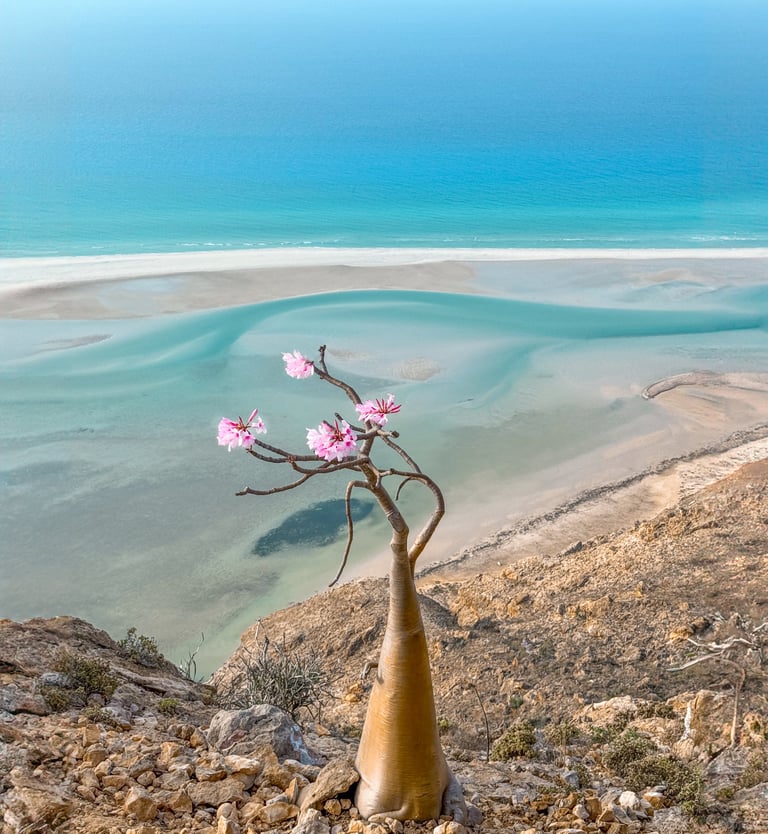

Socotra’s unique plant life has fascinated botanists since 1880, when Scottish botanist Isaac Balfour discovered over 200 new species. Today, the archipelago boasts over 835 vascular plants, with 308 found nowhere else on Earth, earning it UNESCO World Heritage status.
Famous for the Dragon’s Blood Tree (Dracaena cinnabari) and the bottle-shaped Desert Rose (Adenium obesum socotranum), Socotra’s flora includes ancient remnants from a larger landmass preserved in the unique climate of the Hajhir mountains. Other notable plants include the Frankincense tree, with eight endemic species, and the cucumber tree (Dendrosicyos socotranus), the only arborescent member of the cucumber family.
ENVIRONMENT


As isolated as Socotra is, the island is living proof that the human environmental impact has reached every nook of the world. Between climate change and waste build-up, Socotra needs help. We are committed to showing Socotra to the world with as little environmental impact as possible.
We strongly encourage our guests not to leave waste paper behind, bring environmentally friendly hygiene products, pack their dry plastic waste back home, and to make sure trash gets securely placed in the proper bag.
CONTACT US
Bali is an amazing place to immerse yourself into a rich culture, which can surprise you with its history, monuments, celebrations and, of course, food. Contact us so we can help you organize a memorable stay at one of the most magical places on the planet.
